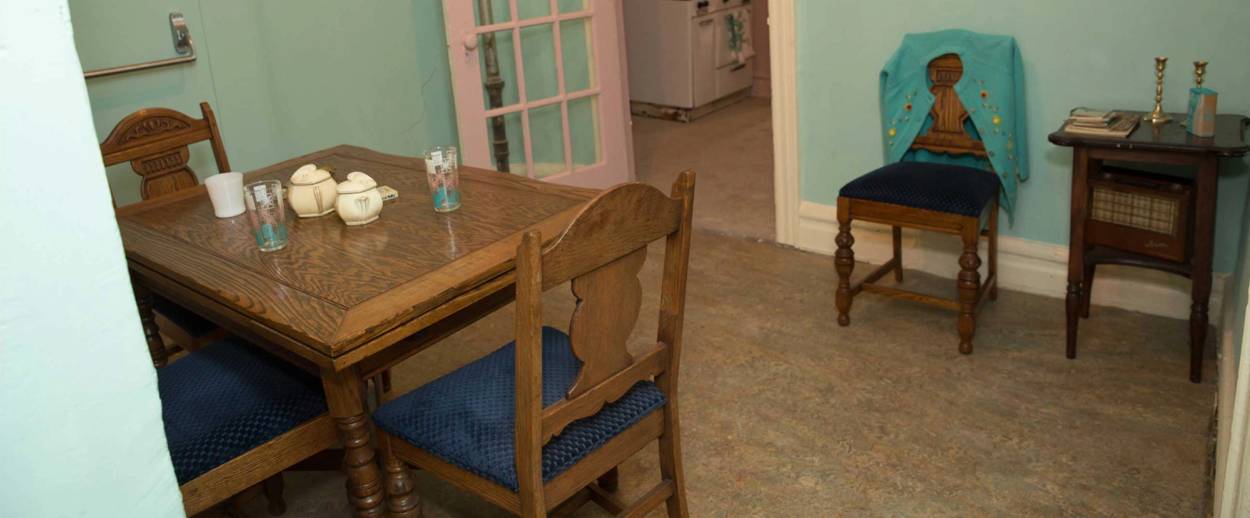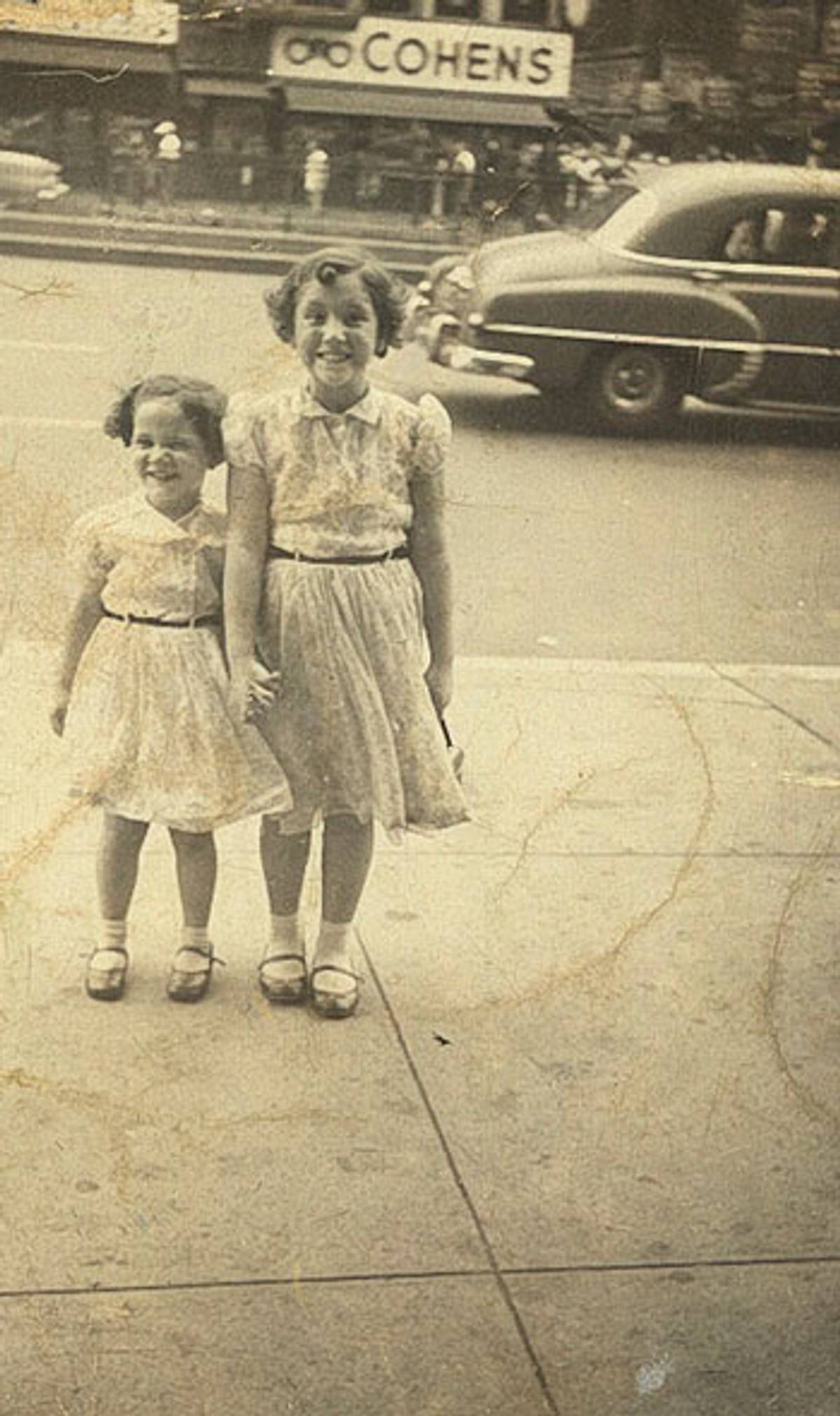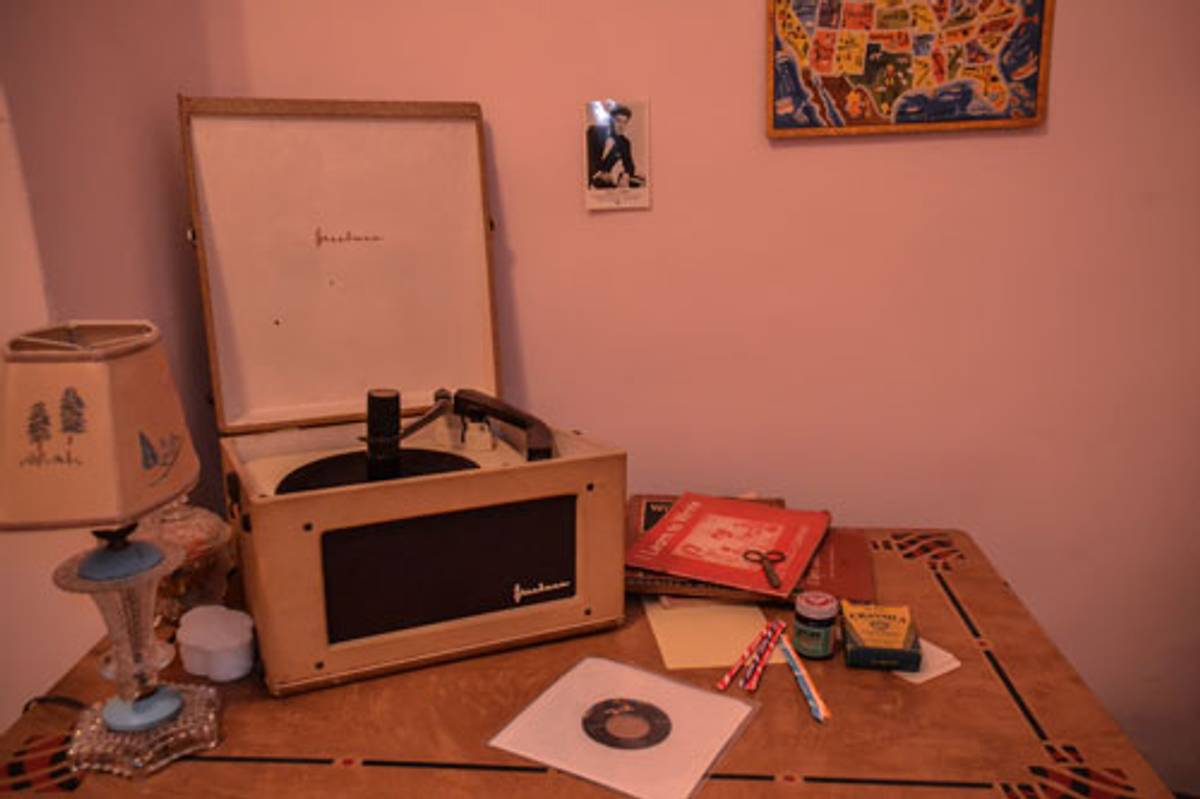Bringing Immigrant Stories Home
The Tenement Museum’s new exhibit focuses on families who came to the Lower East Side relatively recently




The Tenement Museum, housed in an 1863 building at 97 Orchard St. in Manhattan, has always shared stories about life on the Lower East Side in days of yore. Visitors can see an 1870s saloon run by German immigrants, step inside the apartment of a turn-of-the-century Jewish garment-shop worker, check out an Italian Catholic family’s home as it looked during the Great Depression. You can even take a tour with a costumed interpreter, 14-year-old Victoria Confino, an emigrée from the Ottoman Empire who lived at 97 Orchard in 1916. (When I took my 6-year-old daughter on the Confino tour, Victoria promptly put her to work doing laundry with a scrub board and tin tub, and showed us how to fool the gas meter by creating fake tokens out of ice. We were rapt.)
Now the museum has launched a brand-new exhibit in a new (but still old!) location at 103 Orchard Street. It’s called “Under One Roof,” and it’s the first time the museum has told the stories of relatively recent immigrants. Over the course of a 90-minute tour (as with 97 Orchard apartments, tours are the only way to look inside the building), visitors get a glimpse into the lives of three families who actually lived there.

You’ll check out the home of Kalman and Rivka Epstein, concentration-camp survivors who met in a displaced-persons camp outside Frankfurt in 1945 and moved into the building a decade later. Then you see the apartment of the Saez-Velez family, migrants from Puerto Rico who lived at 103 Orchard from 1964 to 2013; finally, there’s the residence of the Wong family, who came from China by way of Hong Kong and lived in the building from 1968 to 2014. Each family had a member who worked in the garment industry, so the tour also offers a mock-up of a small Chinatown garment factory, looking very much as it would have in Mrs. Wong’s day.
Back in 2011, when the museum began planning this exhibit, organizers had no clue that the topic of migration and refugees would become so resonant. “It seems particularly timely, learning about the lives and challenges of new Americans who arrived in Manhattan after World War II,” said Annie Polland, executive vice president of programs at the museum, in an interview. “We had no idea that there’d be talk of a wall.” The intertwined lives of these post-war families now serve as a potent way of telling a uniquely American story. “Tenements can school us in coexistence,” Polland noted. “This is pluralism, experienced on a daily basis. Our country has been so deeply shaped by immigrants, and what the Tenement Museum does best is make immigration real, through families and moments. There’s a spiritual element of the American Dream encapsulated in these families and the relationships they formed with one another.”
A big difference in mounting this particular tour, compared to others, was that museum staffers could actually interview former residents. “It feels different telling stories based on what people who lived here have told us, as opposed to, say, census records,” Polland said. Curator Pamela Keech used family photos in her quest for verisimilitude as she re-created the apartments. In the Saez Velez apartment, I was very taken with a huge turquoise glass chalice with two ceramic Siamese kittens scaling its sides, seemingly about to tumble in. Spectacular! I assumed the surviving family members had donated it to the museum because the exact vase could be seen in a vintage family snapshot … but nope, Keech had found the very item on eBay.
The tour begins with the Epsteins, the first of the three families to move in. Their front door still has the mezuzah Kalman and Rivka hung there in 1955; their now-70ish daughter Bella notes in the virtual tour on the museum’s website that, given her parents’ experiences during the war, displaying their Jewishness so publicly was an act of bravery. The family’s dining room (with Shabbat candlesticks and a vintage JNF pushke in a corner) is painted aqua with yellow trim; daughter Bella’s bedroom walls are fresh peach. Rivka had insisted that the colors be “freilach,” Bella said; she was determined to face the future with optimism.

Bella’s room, my favorite stop on the tour, is also a riot of color. The twin beds have different spreads, one in blue and turquoise and the other in an electric-pink floral. Chenille curtains frame the big windows. On Bella’s shelves and desk are a girly pink jewelry box, a scattering of Pixy Stix, a curled-up jump rope, vintage children’s books. A record player has pride of place, or perhaps that belongs to the black-and-white Paul Anka fan photo hanging right next to it. Kalman bought the record player so he could listen to Moishe Oysher and Yossele Rosenblatt albums, but Bella begged her mom for a Paul Anka record. She listened to the 1957 hit “Diana” over and over. “This song made me an American,” she told the curators. Added tour guide Kathryn Lloyd, “It took a song to make her feel she had access to American culture, even though she was born here.” Bella recalled absorbing American culture through the movies, where she was sent for the afternoon with a bag of rye-bread-and-butter sandwiches. She also learned about the wider world through her friendship with Rosetta, an Italian girl in the building. Of course, Bella wasn’t allowed to eat at Rosetta’s house, and their parents never socialized. “Children of immigrants were sometimes between two cultures,” Philip Kasinitz, a CUNY sociologist, notes on the museum website.
Like so many Jewish immigrants, Kalman gradually came up in the new world. When he arrived in New York, sponsored by his uncle, he worked in an appetizing store and then in a dress shop on Orchard Street. Eventually, he bought the store. Bella attended the Bais Yaakov girls’ yeshiva in the neighborhood, but also ate sugar cane sold by Puerto Rican grocers on the Lower East Side sidewalks. In the early 1960s, the family moved to Canarsie and Bella graduated from Samuel J. Tilden High School in Flatbush. She got married, moved to Long Island, and named her kids after her family’s relatives who died in the Holocaust. She didn’t know until she was much older that her father had been married before the war and had lost a child. Like many survivors, Bella’s parents had had secrets.
Jose Velez is exactly Bella’s age. Growing up in the building, he told interviewers, he saw tattoos of numbers on adults’ arms, but he didn’t know what they meant until later. Though he was born in Puerto Rico, his family was among the half-million Puerto Ricans who came to the city between 1940 and 1960; their community, too, had an impact on the development of New York. Thanks to Puerto Ricans, the city began dual-language services in schools and hospitals and prepared the city for future waves of Hispanic immigration.
In Jose’s family’s apartment, visitors hear atmospheric recordings of street noise owned by WNYC, giving us a sense of what the block sounded like in the early 1960s. The Saez-Velez family’s living-room furniture is encased in plastic slipcovers (just like in my bubbe’s old home!) with Catholic iconography covering the walls (not like my bubbe’s old home!). Tour-goers learn that Ramonita Saez, the family matriarch, left Puerto Rico as a divorced woman with two young sons, got a job in the garment business, and became a proud bigwig in her local International Ladies’ Garment Workers’ Union. We hear her sons’ recorded memories of putting beans on the stove on low in the morning so that dinner would be ready when their mom got home from work—and heaven forbid they burned the beans. We learn that Jose acted as Shabbos Goy for a local synagogue; his brother Andy bought pastries at Gertel’s Jewish Bakery to sell to the Jewish teachers at PS 42. At 15, Jose became the building’s superintendent. Like Bella, he lived a cross-cultural life, belonging to a Boy Scout troop with Irish and Italian kids.
Finally, we see the home of the Wongs. Like the Epsteins, they benefited from legal loosening of immigration restrictions—in their case, the repeal of the Chinese Exclusion Act. For the first time since the 1880s, meaningful numbers of Asian immigrants could come to New York City, starting in the 1960s. (New York City had about 70,000 Chinese-American residents in 1965 when Mrs. Wong arrived; today there are over half a million Chinese-Americans in NYC, adding up to nearly 7 percent of the city’s population.)
The Wongs had four kids: Yat Ping, Yat Fong, Toni, and Kevin. (Guess which two were born in America.) Their apartment has a late-’70s vibe, with blue-and-white-checkered linoleum floors, a Selectric typewriter, a blue-fringed bedspread, organza curtains, school trophies. Kevin recalls watching The Love Boat and recapping it in Chinese for his mother; we see a picture of his mom in a vintage Reese’s Peanut Butter Cups orange T-shirt. As with so many Jewish families, the labor movement was key to this family’s existence. Mr. Wong, a restaurant worker, got no benefits; Mrs. Wong had health and disability insurance through her garment workers’ union.
In the mock-up of the factory, we see rice cookers and teapots for the workers, along with two long tables of sewing machines, bolts of fabric leaning against a corner, a rack of very ’70s utilitarian-meets-disco jumpsuits, and a bulletin board covered with union information and buttons. In the room, if you touch any sewing machine, it triggers a recording. We see 1974 film footage of a factory and hear memories of children for whom factories served as de facto after-school programs. One former resident recalls sitting on the fire escape as a kid, watching trains cross the Williamsburg Bridge, waving at them and feeling thrilled whenever someone waved back. Another remembers being ordered to run and hide whenever the Department of Labor came for an impromptu inspection—once he stayed under a pile of coats, sweating and forgotten until he was found sobbing. He was given two sodas as recompense.
The tour—which is free until the exhibit officially opens Nov. 1—offers visitors a sense of the building as a mishmash of different ethnicities, religions, and backgrounds. “You can imagine Spanish, Chinese, and Yiddish coming from different apartments, floating through the stairwells,” said Lloyd. Over its 127 years as a residence, 103 Orchard St. housed more than 10,000 people; the museum tracked down former residents’ and descendants through reverse phone-book lookups, voting records, and census records before deciding which residents to focus on. As a result, more than the museum’s other tours, this one offers a message about, in Polland’s words, “learning how to live, work, and play with neighbors who come from other traditions and cultures, while also discovering the similarities that connect all of us.”
***
Like this article? Sign up for our Daily Digest to get Tablet Magazine’s new content in your inbox each morning.
Marjorie Ingall is a former columnist for Tablet, the author of Mamaleh Knows Best, and a frequent contributor to the New York Times Book Review.